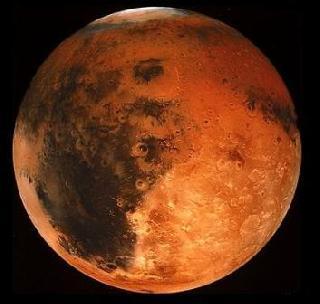
BANGALORE (PTI): India has completed a significant amount of work on next year's planned Mars mission for which scientific payloads have been short-listed, with formal government approval for the ambitious venture expected soon.
Bangalore-headquartered ISRO is planning to undertake the mission to the Red Planet during November 2013. The project report for Indian Mars orbiter mission has been submitted for approval of the Government.
The mission envisages launching an orbiter around Mars using Polar Satellite Launch Vehicle (PSLV-XL). The orbiter will be placed in an orbit of 500 x 80,000 km around Mars and will have a provision for carrying nearly 25 kg of scientific payloads on-board.
"The tentative scientific objective for the Mars mission will be to focus on life, climate, geology, origin, evolution and sustainability of life on the planet," according to an official ISRO report.
Scientific payloads have been shortlisted by ISRO's Advisory Committee for Space Sciences (ADCOS) review committee. Baseline, solar array and reflector configuration of the satellite have been finalised. Frequency filing for communication subsystem is under progress, the space agency said in its just uploaded 2011-12 annual report.
Meanwhile, ISRO has signed a MoU with Indian Institute of Astrophysics for development and delivery of solar coronagraph payload for its ADITYA-1 project, while mechanical configuration of the satellite is in progress.
This project will be the first Indian space-based solar coronagraph, which will be available for solar coronal observation to all the Indian researchers in the field of Solar Astronomy.
ADITYA-1 is the first space-based Solar Coronagraph intended to study the outermost region of the Sun, called corona.
ADITYA-1 in the visible and near IR bands will study the Coronal Mass Ejection (CME) such as the coronal magnetic field structures and evolution of coronal magnetic field and consequently the crucial physical parameters for space weather.
The major scientific objective of the ADITYA-1 is to achieve a fundamental understanding of the physical processes that heat the solar corona (base to the extended), accelerate the solar wind and produce CMEs.
ISRO said preliminary design of the optical systems of ADITYA-1 has been finalised and design document generated.
"Trade-off studies on the selection of detector system have been completed and the list of subsystem packages along with power and mass budget generated," it said.
ISRO has also planned 'SENSE' - a twin satellite mission to probe the electromagnetic environment of the Earth's near space region. It is proposed to launch two small satellites in a low Earth orbit of around 500 km, for space weather related studies.
SENSE is part of ISRO's 'Small Satellites Programme', recommended by ISRO's ADCOS. SENSE aims to unravel the roles played by major large-scale drivers in determining the state of the Ionosphere-Thermosphere system and the weather of the near space environment at low latitudes.
ISRO said engineering models of the electric and magnetic field probes chosen for the SENSE mission have already been tested and their frequency responses studied.
 Previous Article
Previous Article












The Indian Air Force, in its flight trials evaluation report submitted before the Defence Ministry l..
view articleAn insight into the Medium Multi-Role Combat Aircraft competition...
view articleSky enthusiasts can now spot the International Space Station (ISS) commanded by Indian-American astr..
view article